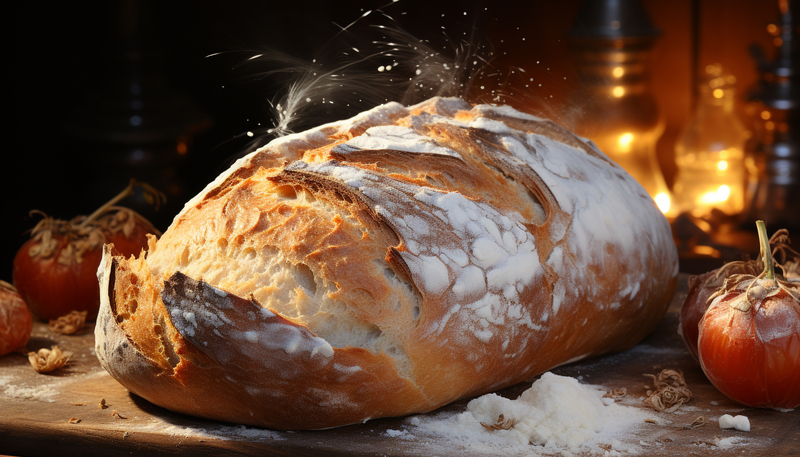 Baking bread is a timeless culinary art that has been passed down through generations.
Baking bread is a timeless culinary art that has been passed down through generations.
It’s a process that combines science and creativity, resulting in the comforting aroma and taste of freshly baked bread.
One of the common questions that novice bakers often ask is, “Can you bake bread at 425°F?”
In this article, we’ll explore the various aspects of baking bread at this temperature and discuss the factors that influence the outcome.
The Basics of Baking Bread
Before we dive into the specific temperature of 425°F, let’s first understand the fundamental principles of bread baking.
Bread is typically made from just a few primary ingredients: flour, water, yeast, and salt.
The process involves mixing these ingredients, allowing the dough to rise, shaping it, and then baking it.
The baking stage is where the magic happens, transforming a sticky mass of dough into a delicious, risen loaf.
The Role of Temperature in Baking
 Temperature plays a crucial role in the bread-baking process.
Temperature plays a crucial role in the bread-baking process.
It affects the fermentation of the yeast, the rise of the dough, and the crust development.
Baking bread at different temperatures can yield varied results in terms of texture, flavor, and appearance.
425°F: A Common Baking Temperature
Many bread recipes call for a baking temperature of 425°F (approximately 220°C).
This temperature is considered standard for most artisan-style bread, including French baguettes, rustic Italian loaves, and sourdough bread.
Here’s why:
- Crust Development
Baking bread at 425°F allows for proper crust development.
The high temperature creates a crisp and golden crust, which is a hallmark of artisan-style bread.
The initial burst of heat helps create the “oven spring,” causing the bread to rise and expand rapidly in the first few minutes of baking.
- Internal Structure
The elevated temperature plays a vital role in crafting a coveted internal structure.
The swift expansion of the dough, driven by the intense heat, yields a well-aerated crumb, bestowing the signature open and airy texture cherished in artisan bread.
- Flavor Enhancement
Baking at 425°F triggers caramelization, enriching the bread’s flavor profile.
As the sugars on the bread’s surface brown, they introduce a delightful, nutty undertone that perfectly complements the soft, airy crumb.
Factors to Consider
 While 425°F is a common and effective baking temperature for many types of bread, several factors should be considered:
While 425°F is a common and effective baking temperature for many types of bread, several factors should be considered:
- Bread Type
Different types of bread may require varying baking temperatures.
For instance, softer bread like sandwich bread typically bakes at a lower temperature, around 350-375°F, to ensure a tender crust and even crumb.
- Recipe Specifics
Always follow the specific temperature recommendations in your bread recipe.
Deviating from the given temperature may yield different results.
- Oven Variability
Ovens can have temperature variations, so it’s essential to understand your oven’s behavior.
Using an oven thermometer can help ensure the accuracy of your baking temperature.
Bottom Line – Can You Bake Bread at 425°F?
Baking bread at 425°F is a common practice for creating delicious, artisan-style loaves with a crisp crust and an airy crumb.
Understanding the role of temperature in bread baking and considering the type of bread, recipe specifics, and your oven’s behavior are essential factors in achieving the perfect loaf.
So, whether you’re an experienced baker or just starting, 425°F can be an excellent starting point for your bread-baking adventures.


